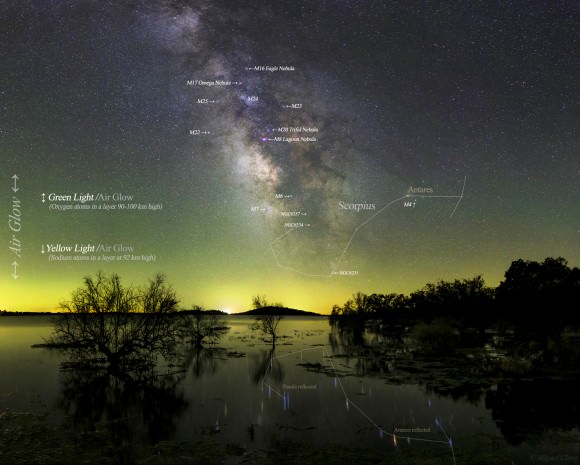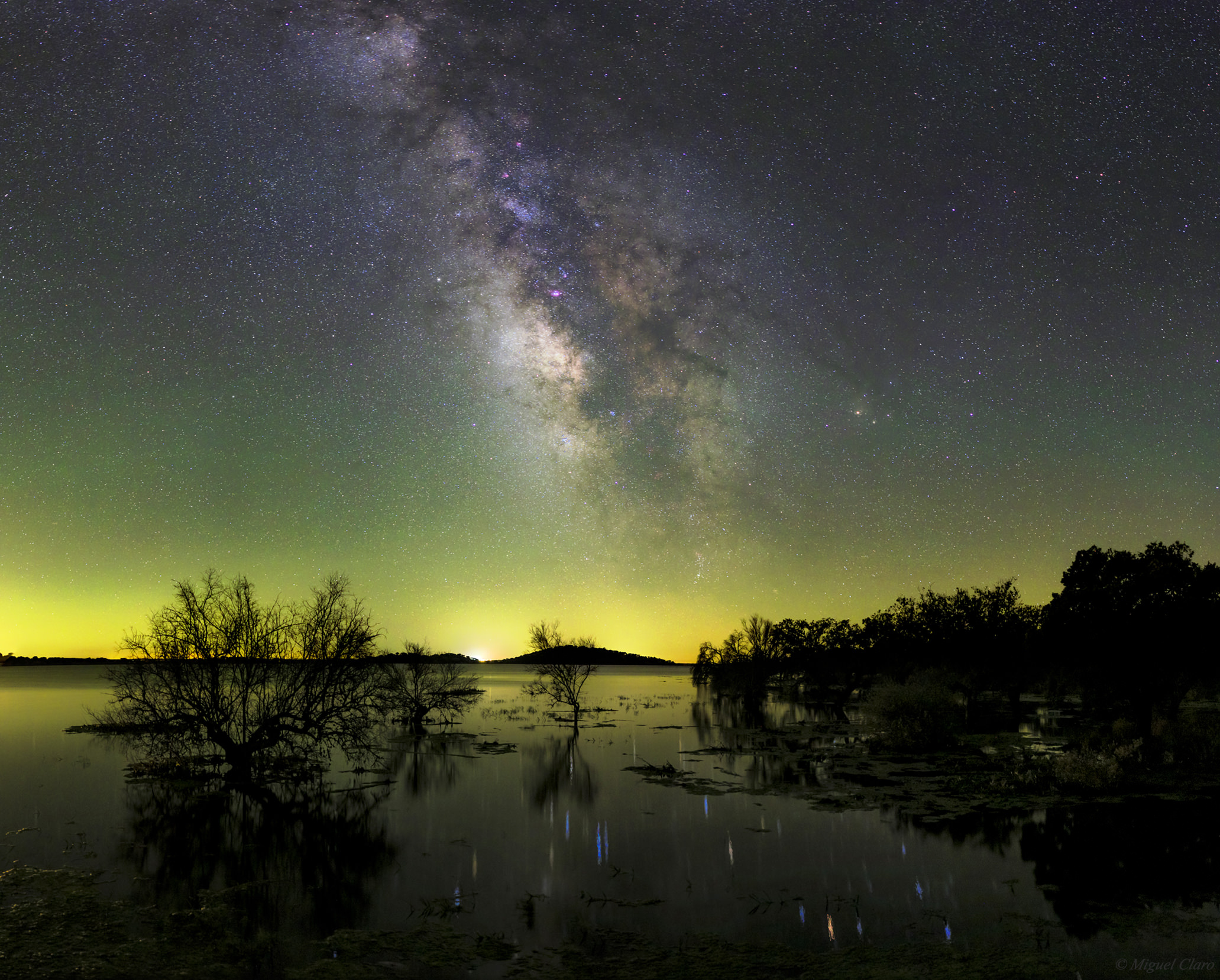Look closely at this beautiful serene view taken by Miguel Claro from Portugal. Not only is it a stunning view of the skies over Lake Alqueva in the Dark Sky Alqueva Reserve in Portugal, but there are also several scientifically interesting features here. Of course, visible is the arc of the Milky Way, filled with colors and light. Seen here is the most central region of the Milky Way, located near the constellations of Scorpio and Sagittarius, where you might recognize many deep sky objects like the Lagoon Nebula (M8) and the Trifid Nebula (M20).
The “glow” seen here is not the aurora borealis, but instead it is airglow (atmospheric chemiluminescence), which is a photochemical reaction that occurs high in the atmosphere when various atoms get excited from the ultraviolet radiation from the Sun. Miguel explained via email that the yellow light is from emissions from sodium atoms in a layer at 92 km, and above it, is green light from oxygen atoms in a layer 90-100 km high. This emission layer is clearly visible from earth orbit, which we’ve seen in many images and videos taken from the ISS.

“Reflected in the peaceful lake and due to the polarization effect of water, we could clearly see the entire constellation of Scorpius with the real color of each star naturally saturated,” Miguel said via email, “due to this polarization and blurred effect, caused by the slowly movement of water during the long exposure. The orange color of the Red Supergiant Antares could be easily distinguished from the blue color of the Subgiant star, Shaula, in the end of tail.”
Miguel used a Canon 60Da – ISO 1600; 35mm lens at f/2; Exp. 15 secs. Mosaic of 23 images, taken on June 15, at 02:35 AM.
You can see another image on Miguel’s website taken on the same night and place, where airglow is visible with the Andromeda Galaxy (M31) and still another with the Big Dipper and gravity waves with the airglow.


Very nice posting Nancy! I like this one because it hits home for us here in northern Arizona. We very seldom get any aurora down here at +34N but we DO get abundant airglow. Mostly to the north, I have seen the green glow expand to the zenith on evenings of a high Kp index from a strong solar wind, or flare. Not quite an aurora (we do actually get those too on occasion) but interesting none the less. Another aspect of the airglow that is seldom discussed is the banding or wave patterns that can be seen and imaged in them. Some refer to the banding as “gravitational waves” which relate more to the undulations in the ionosphere than actual gravity waves.
just as Grace implied I am startled that any body able to make $7327 in 4 weeks on the internet. have you seen this web link www.KEP2.com